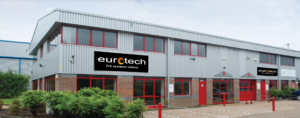
Recognising Valued Partnerships: VOCA Fire Protection
We are delighted to announce that VOCA Fire Protection has been honoured with our ‘Proud to Partner’ award, recognising their outstanding commitment to excellence in
Tall buildings, in general, are not designed for fast and easy evacuation, with narrow stairwells and elevator shafts, exits tend to get clogged up with people and can be dangerous. It is important to learn the best way to evacuate a tall building and thankfully there are several new evacuation strategies in research and in practice today.
There are some new strategies for evacuating tall buildings and some may surprise you. The first one is to use the elevators. I know we have all read the signs that say ‘in event of a fire, use the stairs’ but during the 9/11 disasters, 3,000 people escaped through the elevators. Because of this there are now fire safe elevators being designed and will soon be implemented in building designs. Permitting the use of elevators in the event of a fire would require additional fire protection since unguarded elevator shafts could be flooded with smoke and harm the people inside. Once these proportions have been designed and elevators can be used in the event of a fire It can cut the evacuation time from an hour to just twenty minutes.
When evacuating a tall building it should be done in sections to prevent crowding in stairwells. Move to a floor that is easy to reach and is well below the fire. Everyone should be aware of the buildings safety plan and know the evacuation steps, every building should have at least two evacuation plans. You will need to exit the room you are in before you can evacuate the building, there should be two exits and you should be able to avoid smoke by staying low to the ground while you exit.
Sometimes it is safer to stay where you are rather than trying to evacuate. If smoke or fire is blocking your evacuation route then you should stay put and wait for first responders to instruct you. Buildings are usually required to have 2-4 hour firewalls protecting stairwells, firewalls and floors should help to contain the fire to the section of the building that it started in.
The evacuation process needs to be practiced regularly so that it can run smoothly if a disaster was to ever strike. It is much easier to perfect the process during practice runs than it is in the event of a real fire.

We are delighted to announce that VOCA Fire Protection has been honoured with our ‘Proud to Partner’ award, recognising their outstanding commitment to excellence in

We know that the best partnerships are based on trust, collaboration, and a shared dedication to quality and compliance. That’s why we’re ‘Proud to Partner’

We are proud to announce that all of Eurotech’s sales managers and technical team members have now achieved Level 3 qualifications in Fire Detection and
18-20 Stratfield Park
Elettra Avenue
Waterlooville
PO7 7XN
United Kingdom
Speak to our Experts